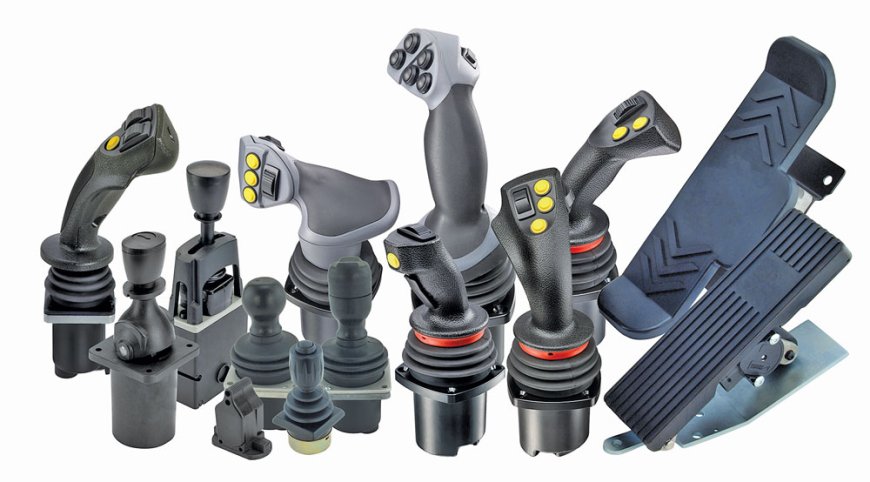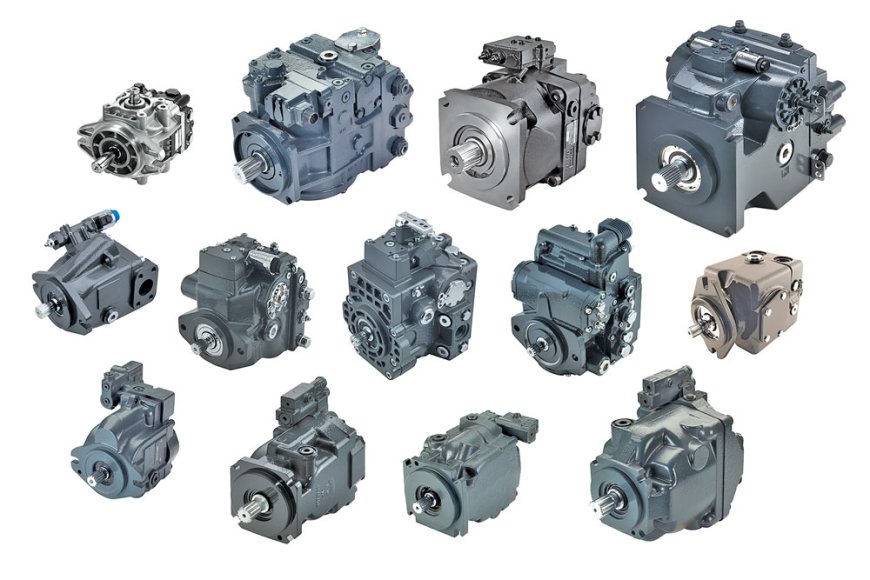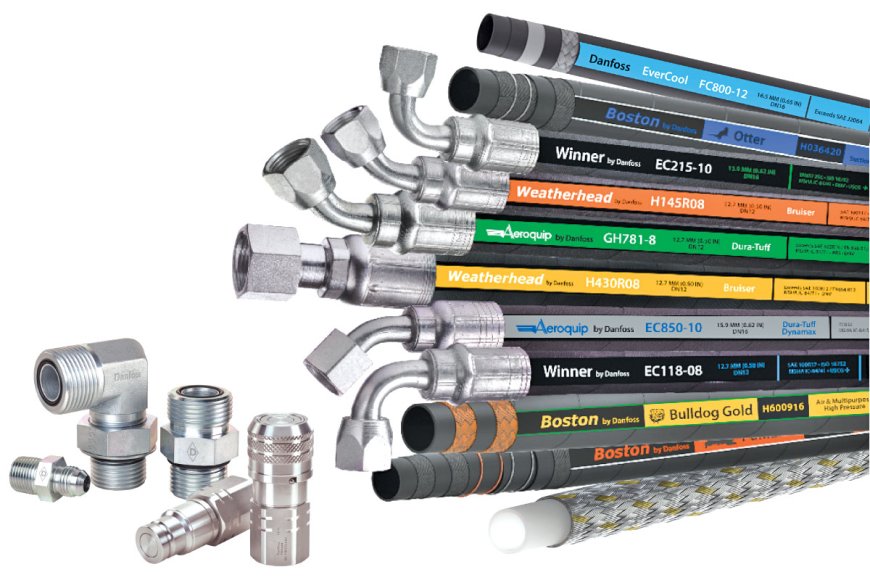With an increasing focus on sustainability, the hydraulic industry is embracing eco-friendly practices.

Anil Ghegade,
What are the current technology trends for your products in infrastructure equipment?
The world of hydraulics is rapidly evolving, driven by technological advancements and changing industrial landscapes. As we navigate toward the future, it’s essential to keep an eye on the emerging trends and predictions that will shape the hydraulic industry. Let’s dive into some of the exciting developments that lie ahead where we also stay invested.
Digital Hydraulics: The integration of digital technologies with hydraulic systems is revolutionizing the industry. Smart sensors, IoT connectivity, and data analytics are enabling real-time monitoring, predictive maintenance, and enhanced operational efficiency. This transformation empowers businesses to make informed decisions and minimize downtime, contributing to improved productivity and cost savings. Infrastructure equipment increasingly incorporates IoT sensors for real-time monitoring, predictive maintenance, and optimizing operational efficiency. There’s a growing emphasis on remote monitoring and control capabilities, facilitated by advancements in connectivity technologies like 5G and advancements in cloud computing. AI and ML are being used to analyze vast amounts of data collected from infrastructure equipment, enabling predictive analytics, anomaly detection, and autonomous operations. Digital twin technology is gaining traction, enabling virtual simulations and predictive modeling of infrastructure equipment performance, optimizing maintenance schedules and operational efficiency.

Sustainability and Green Hydraulics: With an increasing focus on sustainability, the hydraulic industry is embracing eco-friendly practices. Innovations like biodegradable hydraulic fluids and energy-efficient components are gaining traction. As environmental regulations become stricter, companies that adopt green hydraulic solutions will not only reduce their carbon footprint but also position themselves as industry leaders. There’s a shift towards incorporating renewable energy sources and adopting greener technologies in infrastructure equipment, aligning with global environmental goals.
Automation and Robotics: The integration of hydraulics with automation and robotics is reshaping manufacturing processes. Hydraulic actuators and systems are becoming integral components of advanced robotic systems, enabling precise and dynamic movements. This trend is enhancing productivity, accuracy, and flexibility across industries ranging from manufacturing to healthcare. Modular designs are becoming more prevalent, allowing for easier customization, scalability, and integration of new technologies as requirements evolve.

What sustainable innovations has your company implemented in your manufacturing processes?
The hydraulics industry, like many others, has been increasingly focusing on sustainable innovations to reduce environmental impact and improve efficiency. Here are some sustainable innovations in the hydraulics industry:
Energy-Efficient Hydraulic Systems: Advances in hydraulic system design and component technologies have led to more energy-efficient systems. This includes improvements in pump and motor efficiency, as well as the development of variable-speed drives and energy recovery systems.
Bio-based Hydraulic Fluids: Traditional hydraulic fluids are often petroleum-based and can be harmful to the environment if leaked. Bio-based hydraulic fluids, derived from renewable sources like vegetable oils, offer a more environmentally friendly alternative with biodegradable properties.

Electrification of Hydraulics: Integrating electric technologies with hydraulic systems can lead to significant energy savings and reduce emissions. Electric actuators and servo-hydraulics are examples of technologies that combine the advantages of both electric and hydraulic systems.
Smart Hydraulic Systems: Incorporating sensors, IoT connectivity, and predictive analytics into hydraulic systems enables real-time monitoring of performance and condition. This proactive approach helps optimize operations, reduce downtime, and improve overall efficiency.
Hydraulic Hybrid Systems: These systems combine hydraulic and electric powertrains to optimize energy usage in vehicles and machinery. They capture and store energy during braking or deceleration, which can then be used to assist in acceleration, reducing fuel consumption and emissions.
Precision Control and Automation: Advanced control algorithms and automation technologies allow for more precise control of hydraulic systems. This improves efficiency by minimizing energy losses and optimizing performance based on real-time operating conditions.
Hydraulic Component Recycling and Remanufacturing: Recycling and remanufacturing hydraulic components reduce the need for new materials and energy-intensive manufacturing processes. This approach not only lowers costs but also minimizes environmental impact by extending the useful life of components.
Education and Training on Sustainable Practices: Promoting awareness and providing training on sustainable practices within the hydraulics industry encourages adoption of environmentally friendly technologies and processes.
These sustainable innovations not only contribute to reducing the carbon footprint of hydraulic systems but also improve their overall performance, reliability, and cost-effectiveness in the long term.

How do your products help in extending life of construction equipment?
Extending the life of construction equipment is crucial for maximizing return on investment and reducing environmental impact through reduced waste. Here are several ways products and technologies can contribute to this goal:
Robust Design and Materials: Our products are engineered with durable materials and robust designs to withstand harsh operating conditions typical in construction environments. This ensures longer operational life and reduces the frequency of replacements.
Advanced Monitoring and Maintenance Systems: Integration of IoT sensors and telemetry systems allows for real-time monitoring of equipment health and performance metrics. This enables predictive maintenance strategies, identifying potential issues before they lead to costly failures and downtime.
Condition Monitoring: By continuously monitoring parameters such as temperature, pressure, and vibration, our products help operators and maintenance teams detect early signs of wear or potential failures. Timely intervention prolongs equipment life by addressing issues promptly.
Efficient Fluid Management: Effective management of hydraulic fluids, lubricants, and coolants is crucial for equipment longevity. Our products may include features such as advanced filtration systems and fluid analysis capabilities to maintain optimal fluid conditions and prevent contamination.
Training and Support: We provide comprehensive training programs and technical support to operators and maintenance personnel. Proper training ensures equipment is operated correctly and maintained according to manufacturer recommendations, extending its operational life.
Modularity and Upgradeability: Products designed with modularity allow for easy upgrades and component replacements. This not only extends the functional life of the equipment but also adapts it to evolving technological advancements and operational requirements.
Environmental Considerations: We consider environmental factors in product design, such as using materials that are durable and environmentally friendly, promoting energy efficiency, and designing for easier recyclability or reuse at the end of the equipment’s life cycle.
By incorporating these features and practices into our products, we contribute to extending the life of construction equipment, enhancing reliability, reducing downtime, and optimizing operational efficiency for our customers.








